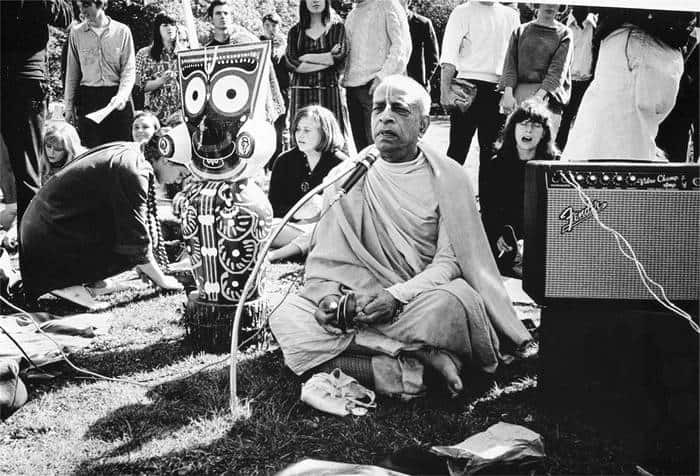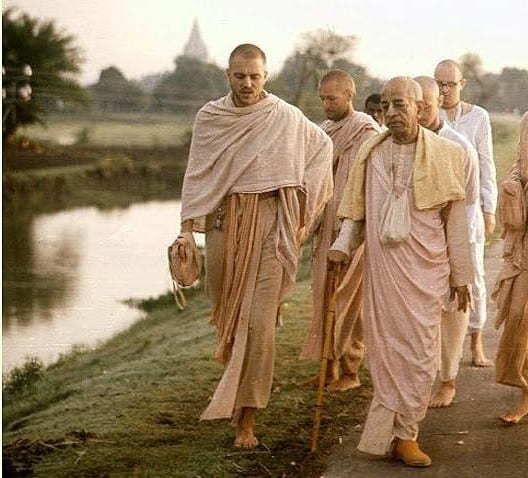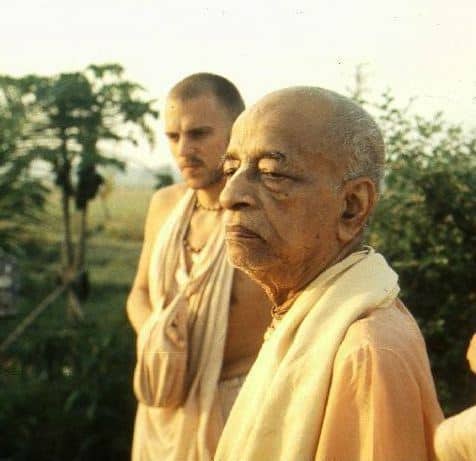Learn About it in Godruma Kalpatavi
Srila Bhaktivinoda Thakura prophecized that Vaishnavas from every continent would join together in Sri Mayapur Dham and chant the Holy Name. Even as India was under the grip of British rule, he remained fully empowered to envision and implement his divine strategies. He brought his extraordinary insights fully into reality by inspiring, facilitating, and activating multitudes of souls to bear fruit for these ingenious seeds.
He confronted various movements that claimed to be in line with Mahaprabhu but were actually propagating their own ideals. These included intellectuals who were contaminating pure Vedic doctrine by viewing it under a materialistic lense, caste brahmins endeavoring to uphold the values attributed to birth status, Christian missionaries who were actively trying to convert Indians away from Sanatan dharma, corrupt politicians, and fake holy men. He faced all of these challenges with a profound sense of intelligence and perseverance. Even from a standpoint within a historical context, his spiritual achievements can be appreciated.
Who Manages the Transcendental Market?
Srila Bhaktivinoda Thakura’s Nama-hatta organizational principles are clearly defined in his devotional work named Godruma Kalpatavi (Desire Tree Grove of Godruma). It outlines a process of “marketing” the holy name through an organized structure and remains highly influential in the mission of ISKCON today.
Within the Nama-hatta, various time periods and dimensions harmonize seamlessly due to the fact that eternal associates of the Lord such as Srimati Vishnupriya Thakurani (Storekeeper) and Srivasa Pandit (Treasurer) are constantly participating in it while Nityananda Prabhu is overseeing everything. Srila Bhaktivinoda Thakura himself stands at the crossroads of past revelations, present realizations, and the vision of future reality. In Godruma Kalpatavi, he has written: “I envision that in the near future, Nama-hatta preaching will grow immensely and become widespread.” In our present reality, this is actually visible and that gives us great inspiration and hope.
Our past and present acharyas who actively supervising the Nama-hatta on an eternal basis. Srila Bhaktivinoda Thakura illuminates a spectacular vision that has no beginning or end: the Lord and his associates never leave this world, although material eyes cannot perceive it. They are always present and attentive to our efforts— always helping to guide us in ways both seen and unseen.
How to Participate in the Nama-hatta
What is the currency that circulates throughout this market of the holy name? Faith. As money (faith) increases, the more one becomes wealthy (advanced) and gains more “purchasing power.” The enterprise of Krsna Consciousness is a free economy that anyone may enter into if they are willing to “work” to chant the holy name. By partaking in this transcendental economy, fortunate souls may enter into the limitless stream of Gaura-Lila, aiding in the unfolding of Mahaprabhu’s divine plan: the Harinam Sankirtan mission.
Godruma Kalpatavi extends an invitation to all of us to join the Nama-hatta, regardless of any material designation. There is ongoing recruitment for specialized employees including brokers, ferrymen, and even barbers. All roles contribute to the maintenance of proper devotional conclusions (Siddhanta) and codes of devotional conduct including outer and inner purity. Srila Bhaktivinoda Thakura both clarified and standardized the duties of those workers with written teachings related to Vaishnava theology. These are outlined in incredible detail within Godruma Kalpatavi.
The Nama-hatta Facilitates Cooperation Between Renunciates and Householders
During the initial period of its implementation, the Nama-hatta system was established by Srila Bhaktivinoda Thakura extended to over 500 groups. It engaged and empowered householders through programs in their own homes. Subsequently, some families were inspired to offer their sons as brahmacaris to the service of the temple. This prepared the way for Srila Bhaktisiddhanta Saraswati Thakur to later take up and extend Mahaprabhu’s mission.
In his commentary on Godruma Kalpatavi, HH Jayapataka Swami Maharaja elaborated more on this strategy, describing the troubled atmosphere that Srila Bhaktivinoda Thakura was navigating through while implementing his Nama-hatta strategy. He describes that sanyasis and other renunciates at that time were not following rules properly. In connection with this, Srila Bhaktivinoda Thakura stated that it was better for a grihasta devotee to live according to that ashram and practice whatever Krsna Consciousness they can than for a duplicitous renunciate who is preaching while not practicing. Later on, Srila Bhaktisiddhanta Saraswati Thakur dovetailed this strategy into his encouragement towards making sanyasis and householders cooperate in their preaching together.
Bringing Godruma Kalpatavi Into Your Community
As a result of ISKCON’s most recent application of these Nama-hatta strategies, brahmacaris, Bhakti-vriksha groups, and members of congregations worldwide have regular chances to meet and grow together in their service. This often is facilitated through various courses and seminars that are open to both renunciates and grihasta devotees. In this way, we can clearly see that Srila Bhaktivinoda Thakura’s mission is ever- progressing, and eternally relevant.
We can understand that Srila Bhaktivinoda Thakura’s writings are rooted in his deep absorption in his timeless spiritual identity. He reveals this to those qualified persons who study his esoteric writings such as Godruma Kalpatavi (Desire Tree Grove of Godruma). It is his personal invitation and instructions for anyone who wishes to enter the Nama-hatta.



